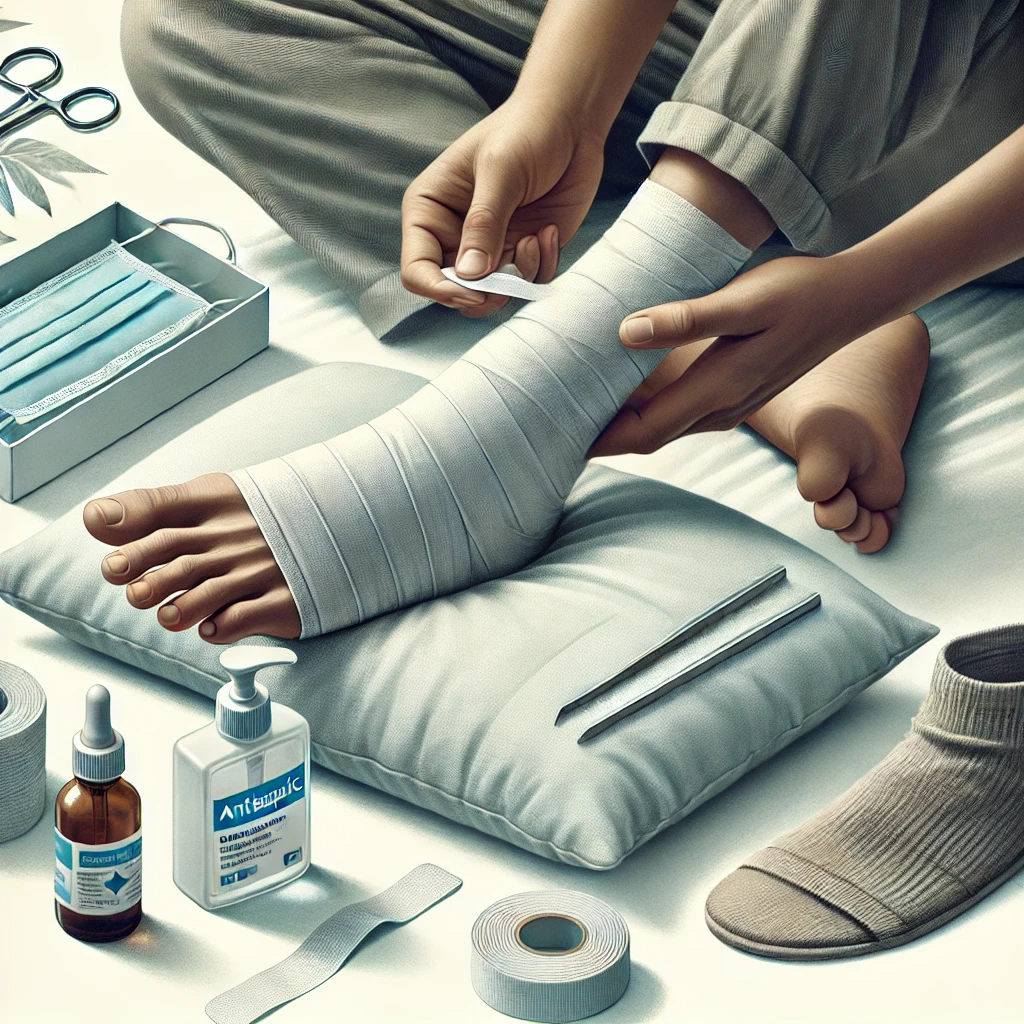Discover the secrets to banishing heel fissures with our comprehensive guide. Dive into causes, treatments, and prevention tips to restore comfort and health to your feet.
Introduction
Heel fissures, or cracked heels, are more than just a cosmetic concern; they’re a cry for help from your overworked feet. Characterized by dry, thickened skin with visible cracks, these fissures can range from a minor nuisance to a severe discomfort. This guide delves into the heart of the problem, exploring the causes, symptoms, and effective remedies to not only heal your heels but also prevent future occurrences. Embrace the journey towards foot comfort and health with our expert advice.
Definition and Overview

Heel fissures, commonly referred to as cracked heels, represent a prevalent foot condition characterized by the presence of dry, thickened skin and visible cracks or splits in the skin around the heel area. While this condition predominantly manifests on the heels themselves, it can also extend to affect the sides of the feet. The severity of heel fissures can vary, ranging from mild, where they are mostly a cosmetic concern, to severe cases that cause considerable pain and discomfort.
Table of Contents
Causes of Heel Fissures

Several factors can contribute to the development of heel fissures, including:
Inadequate Moisture: A lack of proper moisture in the skin can result in dryness, making it more susceptible to cracks and fissures. This can be exacerbated by environmental factors such as low humidity.
Excessive Pressure: Prolonged periods of standing or walking, especially on hard surfaces, can subject the heels to excessive pressure, which can lead to the formation of cracks. The pressure may be further exacerbated by activities that involve excessive weight-bearing on the feet.
Obesity: Increased body weight places additional strain on the heels, making them more prone to developing fissures. The excess pressure from carrying excess weight can exacerbate the condition.
Unsupportive Footwear: Wearing ill-fitting or unsupportive shoes that lack proper cushioning and arch support can contribute to the development of heel fissures. These types of footwear can cause uneven weight distribution and increase the risk of skin dryness and cracking.
Certain Medical Conditions: Several underlying medical conditions can elevate the risk of developing heel fissures. Conditions like eczema, psoriasis, and thyroid disorders can disrupt the skin’s natural moisture balance and make it more susceptible to dryness and cracking. Additionally, diabetes can impair circulation and nerve function in the feet, increasing the vulnerability to heel fissures.
Symptoms and Complications
Various factors can play a role in the development of heel fissures, commonly known as cracked heels, each contributing to the vulnerability of the skin on the heels:
Inadequate Moisture
- The skin on the heels relies on sufficient moisture to maintain its flexibility and resilience. When moisture levels are insufficient, the skin tends to dry out, becoming more prone to the formation of cracks and fissures.
- Environmental conditions, such as low humidity, can further exacerbate this problem by drawing moisture away from the skin. As a result, maintaining proper hydration becomes crucial in preventing heel fissures.
Excessive Pressure
- Extended periods of standing or walking, especially on hard and unforgiving surfaces like concrete, place the heels under continuous pressure. This relentless pressure can create micro-injuries in the skin, eventually leading to the development of visible cracks.
- Activities involving significant weight-bearing on the feet, like running or carrying heavy loads, can intensify the pressure on the heels, hastening the formation of fissures.
Obesity
- Excess body weight can amplify the burden on the heels, making them more susceptible to the development of fissures. The heels bear a substantial portion of the body’s weight, and any additional load exacerbates this stress.
- Over time, the repeated pressure from obesity can weaken the skin’s integrity, leading to cracks and discomfort. Weight management and proper foot care are crucial for individuals dealing with this factor.
Unsupportive Footwear
- Ill-fitting or unsupportive footwear plays a pivotal role in the occurrence of heel fissures. Shoes lacking adequate cushioning and arch support can lead to uneven distribution of weight on the feet.
- The resulting uneven pressure can contribute to dryness and cracking of the skin on the heels. Wearing properly-fitted, supportive shoes can significantly reduce the risk of fissures.
Certain Medical Conditions
- Various underlying medical conditions can elevate the risk of heel fissures. Skin conditions like eczema and psoriasis disrupt the skin’s natural moisture balance, rendering it more susceptible to dryness and cracking.
- Thyroid disorders can also affect skin health, exacerbating the risk of heel fissures. Additionally, diabetes poses a unique threat as it can impair circulation and nerve function in the feet, making the skin more vulnerable to fissures and infections.
Prevention and Treatment
Prevention Tips

Effective prevention of heel fissures involves adopting a proactive approach to foot care. Here are some essential preventive measures to consider:
Moisturizing: Regularly moisturize your feet, paying special attention to the heels. High-quality foot creams or ointments containing ingredients like urea or shea butter are excellent choices. This keeps the skin well-hydrated, preventing dryness and the development of cracks.
Proper Footwear: Select supportive shoes that offer adequate cushioning and arch support. Shoes that fit well and provide shock absorption help distribute pressure evenly across your feet, reducing strain on the heels.
Maintain a Healthy Weight: Maintaining a healthy weight is crucial in minimizing the excessive strain placed on your feet and heels. Weight management contributes significantly to the overall health of your feet and can help prevent fissures.
Regular Foot Care: Incorporate a routine for foot care into your daily life. This includes regular washing to keep feet clean and free from bacteria, exfoliation to remove dead skin cells, and trimming your toenails carefully to prevent ingrown nails.
Treatment Options
When heel fissures do occur, prompt and appropriate treatment can alleviate discomfort and expedite healing. Consider the following treatment options:
Moisturizers: Apply thick, emollient moisturizing creams or lotions to the affected areas. This helps soften the skin, reduces dryness, and prevents further cracking. For overnight treatment, wear socks after applying the moisturizer to lock in the moisture.
Exfoliation: Gently exfoliate your heels using a foot file or scrub to remove dead and dry skin. This process encourages the emergence of new, healthier skin underneath.
Pumice Stone: Utilizing a pumice stone can be effective in smoothing out rough patches and improving the appearance of cracks. Use it on damp skin, moving it gently in a circular motion to avoid excessive abrasion.
Foot Soaks: Soaking your feet in warm water infused with salts or essential oils can work wonders. This practice helps soften the skin, aids in pain relief, and promotes healing. Consider Epsom salt, lavender oil, or tea tree oil for added benefits.
Protective Footwear: While you’re dealing with heel fissures, opt for cushioned and supportive footwear to reduce pressure on the heels. Avoid open-back shoes that expose your heels to additional friction.
Home Remedies

In addition to the aforementioned treatments, several home remedies can provide relief and support healing:
Coconut Oil: Applying coconut oil to the affected areas helps moisturize and heal the skin due to its natural emollient properties.
Honey: Honey’s antibacterial properties can prevent infection and promote healing when applied to fissures. It also has moisturizing qualities that benefit dry skin.
Aloe Vera: Aloe vera gel is known for its soothing and healing properties. Applying it to dry and cracked skin can provide relief and accelerate the healing process.
FAQ Section
Q1: What causes heel fissures? A1: Heel fissures result from a combination of factors, including inadequate moisture, excessive pressure on the feet, obesity, unsupportive footwear, and certain medical conditions like eczema and diabetes.
Q2: How can I prevent heel fissures? A2: Preventing heel fissures involves regular moisturizing, wearing supportive footwear, maintaining a healthy weight, and adopting a comprehensive foot care routine.
Q3: Are there any effective home remedies for heel fissures? A3: Yes, home remedies like coconut oil, honey, and aloe vera gel can moisturize the skin, promote healing, and provide relief from discomfort.
Q4: When should I see a doctor for heel fissures? A4: If your heel fissures are deep, bleeding, or show signs of infection, or if you have an underlying health condition like diabetes, it’s important to seek medical advice.
Q5: Can diet affect heel fissures? A5: Yes, a balanced diet rich in vitamins, minerals, and hydration plays a crucial role in skin health. Nutrients like vitamin E, omega-3 fatty acids, and adequate water intake can improve skin elasticity and moisture, reducing the risk of developing heel fissures.
Q6: How often should I moisturize my feet to prevent heel fissures? A6: Moisturizing your feet at least once a day, preferably after bathing when the skin is still moist, can significantly prevent dryness and cracking. For those with extremely dry skin, applying a moisturizer twice daily and wearing socks overnight can lock in moisture effectively.
Q7: Are heel fissures a sign of a more serious health issue? A7: While heel fissures are often due to external factors like dry skin and pressure, they can also indicate underlying health issues such as diabetes or thyroid disorders, which affect skin health and healing. Persistent or severe heel fissures warrant a consultation with a healthcare provider.
Q8: Can exercise contribute to heel fissures? A8: Certain types of exercise, especially those putting excessive pressure on the feet, can contribute to heel fissures. However, wearing appropriate footwear and practicing good foot hygiene can mitigate these effects. Exercises that improve circulation and maintain a healthy weight can be beneficial for overall foot health.
Q9: What are the best types of shoes to prevent heel fissures? A9: Shoes that provide adequate support, cushioning, and fit well are best for preventing heel fissures. Avoid wearing flat, hard-soled shoes or those with open backs that can exacerbate pressure and dryness on the heels.
Q10: Can soaking my feet help heal heel fissures? A10: Yes, soaking your feet in lukewarm water with Epsom salt or gentle soap can help soften the skin and make it easier to remove dead skin with a pumice stone. However, avoid overly hot water or harsh chemicals, as these can further dry out the skin.
Conclusion
Heel fissures, though common, shouldn’t be overlooked as mere aesthetic flaws. They signal the need for better foot care and health practices. By understanding the underlying causes and implementing effective prevention and treatment strategies, you can achieve not only healed heels but also enhanced comfort and well-being for your feet. Remember, your feet carry you through life’s journeys; it’s time to give them the care and attention they deserve.











Thank you for any other informative site. Where
else may I am getting that type of information written in such a perfect approach?
I’ve a venture that I am simply now working on,
and I’ve been on the glance out for such information.
My family always say that I am wasting my time here at web, however I
know I am getting knowledge every day by reading thes
pleasant articles or reviews.
Hi there, just became aware of your blog through Google, and found that it’s really informative.
I’m going to watch out for brussels. I’ll be grateful if you
continue this in future. Many people will be benefited from your writing.
Cheers!
Hey There. I discovered your weblog the usage of msn. This is a really well written article.
I will make sure to bookmark it and return to learn extra of your helpful information. Thanks for the post.
I’ll definitely return.
I believe that is among the such a lot significant information for me.
And i’m satisfied reading your article. However want to observation on some common issues, The site taste
is ideal, the articles is in reality great : D.
Just right job, cheers
Why people still use to read news papers when in this
technological globe the whole thing is presented on net?